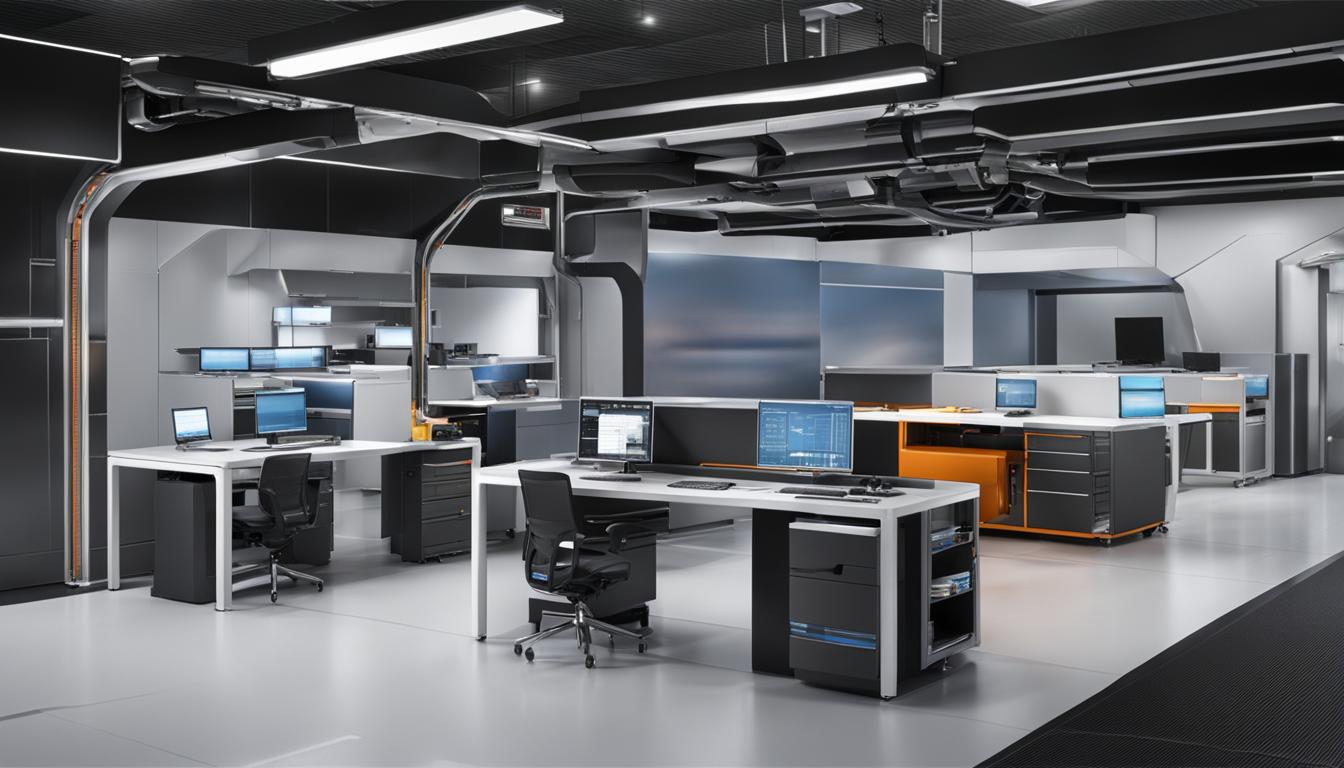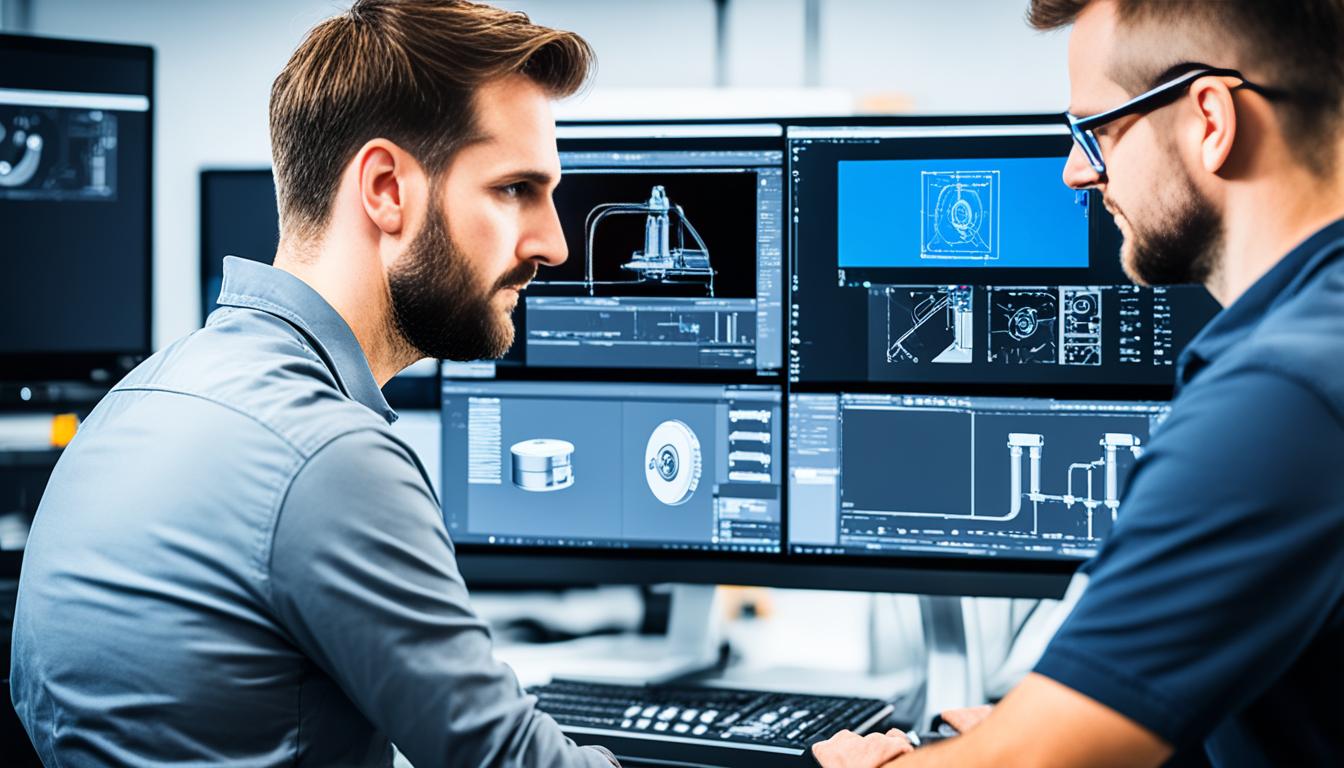CAD (Computer-Aided Design) and CAM (Computer-Aided Manufacturing) are distinct yet complementary technologies in the CNC machining process. CAD focuses on creating digital 3D models of parts or products, while CAM translates these designs into machine-readable instructions for CNC equipment. The key differences between CAD and CAM include their primary functions, software types, user roles, output formats, stages in the manufacturing process, level of automation, and required skill sets. CAD is used earlier in the design phase, typically by engineers or designers, to create and modify product designs.
CAM, on the other hand, is employed later in the production stage by CNC programmers or machinists to generate toolpaths and G-code for CNC machines. CAD software produces 3D models or 2D drawings, whereas CAM software generates machine instructions and toolpaths. CAD requires creativity and design skills, while CAM demands knowledge of machining processes and CNC programming. Understanding these differences is crucial for CNC enthusiasts to effectively navigate the entire design-to-manufacturing workflow and optimize their CNC projects.
- CAD focuses on creating digital designs, while CAM automates manufacturing processes.
- CAD software enables designers to create 2D and 3D models, while CAM software generates tool paths for production.
- CAM ensures repeatable quality, high precision, faster turnaround time, and cost-effectiveness.
- CAM plays a crucial role in industrial automation, 3D printing, robotics, and CNC machining.
- CAM software is essential in engineering for accuracy, efficiency, and cost savings.
What is Computer-Aided Manufacturing (CAM)?
Computer-Aided Manufacturing (CAM) is a computer-aided process that utilizes CAM software and computer hardware to control various manufacturing processes. CAM software empowers manufacturers to design and model digital representations of their products, create intricate 3D models, and preview designs before commencing the actual manufacturing process. It enables them to generate precise bills of materials, simulate the manufacturing process, automatically generate tool paths, and detect potential issues in the programming.
With CAM software, manufacturers can visualize and simulate the manufacturing process, ensuring optimal efficiency and accuracy before any physical production takes place. By digitally simulating the manufacturing process, they can identify and address potential issues, such as collisions between tools or obstructions in the production line.
Furthermore, CAM software provides robust capabilities for generating tool paths, which are specific instructions for CNC machines to follow in order to produce the desired output. This automation of tool path generation streamlines the manufacturing process and reduces the need for manual intervention, resulting in enhanced productivity and reduced costs.
In summary, Computer-Aided Manufacturing (CAM) is a powerful tool that leverages software and computer hardware to enhance manufacturing processes. It enables manufacturers to accurately simulate the manufacturing process, generate tool paths, and detect potential issues, ultimately improving efficiency and productivity in the production line.
Advantages of CAM
CAM offers several advantages to manufacturers. It ensures repeatable quality throughout the production process, regardless of the batch size or complexity of the manufacturing process. This means that manufacturers can consistently deliver products that meet the highest standards of quality and reliability.
Furthermore, CAM enables high precision in the manufacturing of components. With advanced software and automation, manufacturers can achieve accuracy and tight tolerances that are crucial for industries such as aerospace, automotive, and medical.
Another key advantage of CAM is faster turnaround time. By automating the manufacturing process, CAM software significantly reduces the time required to produce parts and prototypes. This not only improves efficiency but also allows manufacturers to meet tight project deadlines and deliver products to market faster.
Moreover, CAM is cost-effective for manufacturers. By minimizing the need for additional manpower and streamlining the production process, CAM reduces labor costs and increases productivity. Additionally, CAM helps minimize waste and reduces the risk of errors, leading to cost savings and minimizing the need for rework.
In summary, the advantages of CAM include repeatable quality, high precision, faster turnaround time, and cost-effectiveness. These benefits make CAM an essential tool for manufacturers seeking to optimize their production processes and achieve superior results.

Exploring CAM in Modern Manufacturing
CAM, also known as Computer-Aided Manufacturing, has revolutionized modern manufacturing by enabling industrial automation, efficiency, precision, and flexibility. It plays a crucial role in various processes such as 3D printing, robotics, and CNC machining.
CAM software enhances the manufacturing workflow by automating repetitive tasks, optimizing production processes, and improving overall productivity. With CAM, manufacturers can streamline their operations and achieve higher levels of efficiency, resulting in reduced costs and faster turnaround times.
One of the key benefits of CAM is its ability to ensure precision in manufacturing. Through advanced algorithms and simulations, CAM software enables the creation of highly accurate tool paths, minimizing errors and ensuring consistent quality across production runs.
Flexibility is another advantage offered by CAM. With its digital capabilities, manufacturers can easily make design changes or iterations, adapt to new market demands, and produce customized products. CAM empowers manufacturers to quickly respond to customer needs and stay competitive in the dynamic manufacturing landscape.
The integration of CAM with technologies such as robotics and 3D printing further enhances manufacturing capabilities. CAM-driven robotics enable automated assembly lines and efficient material handling, reducing human error and increasing productivity. The combination of CAM and 3D printing opens up new possibilities for rapid prototyping, custom manufacturing, and complex geometries that were previously challenging to produce.
Overall, CAM is a powerful tool that empowers manufacturers with industrial automation, efficiency, precision, and flexibility. It revolutionizes the manufacturing industry and paves the way for innovative advancements in areas such as robotics, 3D printing, and CNC machining.
Advantages of CAM in Modern Manufacturing
| Advantages of CAM | Benefits |
|---|---|
| Industrial Automation | Streamlined workflow, reduced manual labor, increased productivity |
| Efficiency | Faster turnaround times, optimized production processes, reduced costs |
| Precision | Highly accurate tool paths, consistent quality, minimized errors |
| Flexibility | Ability to make design changes, adapt to market demands, produce customized products |
| 3D Printing Integration | Rapid prototyping, complex geometries, customized manufacturing |
| Robotics Integration | Automated assembly lines, efficient material handling, reduced human error |
Importance of CAM in Engineering
In the field of engineering, CAM software plays a vital role in streamlining manufacturing processes and maximizing efficiency. It offers numerous benefits that contribute to accurate production, cost savings, and improved quality control.
Efficiency and Accuracy
CAM software enables engineers to optimize CNC machining and 3D printing processes, resulting in increased efficiency. By automating tasks such as toolpath generation and machine programming, CAM reduces the time and effort required for manual setup. This automation ensures consistent and precise manufacturing, minimizing errors and improving accuracy.
Cost Savings and Consistency
One of the key advantages of CAM is its ability to generate cost savings. By optimizing toolpath strategies and reducing material waste, CAM software helps manufacturers minimize production costs. Additionally, the consistency achieved through automated processes ensures that each part or component meets the desired specifications, preventing costly reworks or defects.
Automation and Quality Control
CAM software enables the automation of various manufacturing processes, improving productivity and reducing dependence on manual labor. This automation not only increases efficiency but also enhances quality control. With CAM, engineers can simulate and analyze the entire production process, detecting potential issues and making necessary adjustments upfront, leading to consistently high-quality outputs.
By combining CAM with CNC machining and 3D printing technologies, engineers can achieve remarkable levels of precision, efficiency, and consistency. The integration of these advanced technologies empowers manufacturers to produce complex parts and prototypes with unmatched accuracy, resulting in superior end products.
| Benefits of CAM in Engineering |
|---|
| Improved efficiency |
| Increased accuracy |
| Cost savings through optimization |
| Consistent quality control |
| Automation of manufacturing processes |
When it comes to achieving precision, efficiency, and cost savings in engineering, CAM software is an indispensable tool. Its ability to automate processes, ensure accuracy, and streamline workflows makes it an essential component of modern manufacturing.
Choosing the Right CAD/CAM Software
When it comes to selecting CAD/CAM software, finding the right one for your needs is crucial. Consider the following factors to make an informed decision:
- Suitability: Evaluate the software’s suitability for your specific requirements. Different CAD/CAM software options cater to various industries and applications. Ensure that the software aligns with your manufacturing processes and design preferences.
- Features: Assess the features provided by the software. Look for capabilities such as 3D modeling, simulations, toolpath generation, and automatic error detection. Evaluate whether the software offers the necessary tools to optimize your manufacturing workflow.
- Integration: Check whether the CAD/CAM software integrates smoothly with your existing systems and machinery. Seamlessly connecting the software to your CNC machines and other manufacturing equipment ensures efficient data transfer and streamlines the production process.
- Simplicity: Consider the ease of use and user-friendly interface of the software. If you or your team members have limited coding knowledge, opt for software that offers intuitive workflows and requires minimal programming. A straightforward and accessible user experience can enhance productivity and reduce the learning curve.
It’s important to explore different CAD/CAM software options and compare their features, benefits, and pricing. Some popular CAD/CAM software solutions include:
- Autodesk Fusion 360
- Siemens NX
- SolidWorks CAM
- Mastercam
These software options offer a range of capabilities and cater to various levels of expertise, from beginner-friendly to advanced. Depending on your specific needs, budget, and coding knowledge, choose the CAD/CAM software that best suits your requirements.

| Software | Features | Integration | Simplicity | Coding Knowledge Required |
|---|---|---|---|---|
| Autodesk Fusion 360 | 3D modeling, simulations, toolpath generation | Smooth integration with Autodesk products | User-friendly interface | No coding knowledge required |
| Siemens NX | Advanced modeling, simulation, and optimization | Seamless integration with Siemens PLM software | Powerful, yet intuitive interface | Advanced coding knowledge beneficial |
| SolidWorks CAM | 2.5-axis to 5-axis machining, automatic toolpath generation | Tight integration with SolidWorks CAD | Beginner-friendly interface | Minimal coding knowledge required |
| Mastercam | Wide range of machining strategies, advanced simulation | Compatible with various CNC machine brands | Feature-rich interface | Advanced coding knowledge beneficial |
Learning and Practicing CAM
To effectively learn computer-aided manufacturing (CAM), it is crucial to grasp the basic concepts that form the foundation of this powerful technology. Understanding coordinate systems, geometry, toolpaths, simulation, and G-code is essential for becoming proficient in CAM software.
One of the best ways to gain hands-on experience and become familiar with CAM software is through practice. Start with simple projects and gradually work your way up to more complex designs. This practical approach allows you to develop your skills and build confidence in using the software.
Joining communities of CNC enthusiasts is another valuable strategy for learning and improving your CAM expertise. These communities provide a supportive environment where you can ask questions, share knowledge, and gain insights from experienced individuals. Engaging with the community opens doors to networking opportunities and continuous learning.
Continuous learning and experimentation are key components of mastering CAM software. As technology evolves, new features and techniques emerge, making it important to stay updated with the latest developments. Pushing the boundaries and exploring new possibilities through experimentation will further enhance your understanding and proficiency in CAM.
